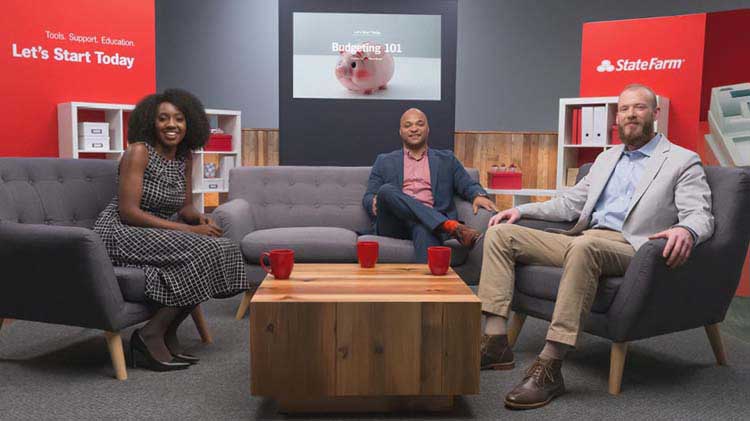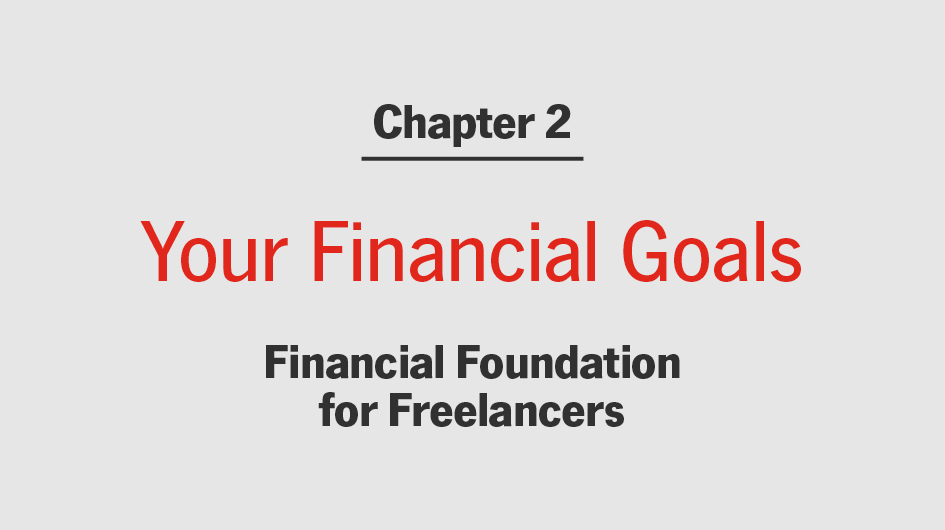Transcript
(SUPER: 6. AUTOMATION)
00:03 TONYA: So we realize we have to change these spending habits. Is that enough or do we need to automate? What do you guys think about automation?
00:10 KAMEREN: I think it comes down to personal preference.
00:12 KAMEREN: I am a fan of automation. I think that -- I try to automate as much as possible for a couple of reasons. I think it gives you -- I think you can leverage your time, right, or I’m leveraging technology so that I have more time. I do things like my bills, my gas bill, my water bill, my insurance -- a lot of these fixed expenses are definitely automated. And I try to -- let’s say I’m going to have a shopping budget that’s $200 a month. I will go so far as to automate a scheduled transaction to my shopping account so that there’s only $200 in there.
00:49 ERIC: Are you talking like a separate bank account?
00:53 KAMEREN: Mm-hmm, sure.
00:34:07 ERIC: Okay.
00:51 KAMEREN: I’m saying I want to spend -- I’ve set up my budget, I’ve hit my goals. I’ve got $200 to spend for shopping. I’m not pulling it from my account. I’m setting up a different account and I’m moving money automatically from my account each month to this separate account. And I’m only using this card for shopping.
1:05 ERIC: Yeah.
1:08 KAMEREN: So once it’s out, it’s out.
1:09 ERIC: Right.
1:10 TONYA: It’s gone, it’s gone.
1:11 KAMEREN: That’s my preference.
1:13 ERIC: No, I meet with a lot of people who like that system, setting up different accounts for different purposes.
1:17 (Budgeting 101 graphic)
1:18 ERIC: Maybe you’ve got one account where your paycheck comes into and some money stays there. Maybe the money for the bills stays in that account.
1:26 KAMEREN: Right, right.
1:28 ERIC: But then you have a separate account that’s like your fun money for the things like dining out and ride sharing and things like that. And then maybe you’ve got a retirement account or a savings account for emergencies, things like that. So having multiple different accounts for different goals can be helpful. Because otherwise what happens? You see your savings account. If you’re doing a good job at saving for your goals, it’s starting to grow, it’s getting bigger. But you just see one big number, right.
1:54 KAMEREN: Right.
1:55 ERIC: And what does that mean to you?
1:56 KAMEREN: If it’s not allocated right, if it says “New Home” on it, that means something different than just savings.
2:03 ERIC: Right, exactly.
2:04 TONYA: Just money, just savings account. Yeah, but you haven’t given it a job to do yet.
2:08 ERIC: Yeah, you give yourself more insight into how much progress you’re making on all your goals when you decide to give your account a nickname or set up separate accounts for different things.
2:18 TONYA: Yeah, I mean, automation for some people -- I know that I prefer to do things manually. I just like to be hands-on with my money. But I think that automation actually sets some people up for success. You know, it’s one of those things that helps insure that they use their money towards what they said they wanted to use their money towards.
2:35 ERIC: Yeah
2:36 KAMEREN: So you do the old-fashioned pen and paper?
2:38 TONYA: I’m old-fashioned when it comes to my money. I like to touch my money.
2:43 ERIC: Yeah, there are studies that show you write stuff down and it sinks in a little better.
2:46 TONYA: It commits to memory for me.
2:47 ERIC: It’s tactile.
2:48 KAMEREN: You know, the best plan is the one that you use. So if it works for you, good.
2:54 TONYA: And that's what’s important. There’s really no right or wrong way to do it as long as you’re doing it. But I definitely did want to -- for people who say that automation isn’t for them and so forth, I think that it’s wonderful that you mentioned setting up a separate account that the automated funds come out of so it’s not coming out of the direct account tied to what you’re spending money from regularly.
3:16 TONYA: So you kind of take yourself out of the equation and create these bumper guards so that you are not getting those late fees hopefully if you have properly managed your budget and allocated money from your -- Umm -- maybe the account you get your income from into the account that you pay your bills from.
3:27 TONYA: So that’s how automation works smoothly but also just making sure that you are properly managing your budget. It helps a lot. It allows your budget to run smoother and more efficiently.
3:38 ERIC: Uh huh..I agree.
3:40: TONYA: And automation is not for everyone. Every budget isn’t for everyone but there would be certain elements that work for you.
3:46 3:47 ERIC: Yeah, absolutely. A couple of key things I want to hit. I think I know where you’re going here. A couple of key things I want to hit about automation. It can be very valuable. It can save you a lot of time. It can simplify your financial life. Don’t automate a habit that you’re not happy with though.
4:01 TONYA: That’s true.
4:02 KAMEREN: That’s a good point.
4:03 ERIC: If you feel like you spend too much money on dining out, don’t automate a transfer for the amount you normally spend on dining out.
4:10 KAMEREN: Right.
4:11 ERIC: Because you don’t want to spend that much on dining out.
4:13 TONYA: Yeah.
4:14 ERIC: Don’t automate until you’re happy with how you’re spending your money. And then the other key thing to understand is an automatic transfer can be valuable because if your rent or -- maybe rent’s a bad example. But let’s say that your water bill is due on the 10th of the month, if you have an automatic transfer set up to pay it, the money is going to get pulled from your bank account whether it’s there or not.
4:31 TONYA: Yeah, set a reminder.
4:33 ERIC: So it’s good in the sense that you’re not going to miss your bill payment, but you need to make sure you’ve got the money in your account too.
4:38 KAMEREN: Right.
4:39:42 TONYA: Yeah.
4:40 ERIC: So those are the keys. But where I think you’re going here is automation is a tool you can use to make it more likely that you’ll achieve your goals.
4:47 TONYA: Yeah, definitely, that’s where I was going, Eric.
4:49 ERIC: We’ve always got a lot of goals, right. And if you think about your goals as like pins at the end of a bowling lane. You’re in a bowling alley and there are pins at the end of your lane. And, I don’t know about you guys, but I’m a subpar bowler so I’m not going to –
5:04 KAMEREN: What is subpar?
5:05 ERIC: Subpar is in the hundreds. Two hundreds would be like a dream.
5:08 TONYA: I’m decent. You know, I don’t think anyone’s going to draft me for their bowling league, but I’m decent.
5:12 KAMEREN: Well, I think we should go tonight and find out.
5:15 TONYA: Yeah, we should.
5:16 KAMEREN: All right.
5:17 ERIC: Let’s see how it actually turns out, right.
5:18 TONYA: Okay.
5:18 KAMEREN: Sure, sure.
5:19 ERIC: Let’s see if you can back up that 300-pound bench press talk.
5:21 KAMEREN: Listen, man. We’re going to derail this conversation and start talking about how I’m going to whoop you in bowling.
5:28 ERIC: No, no, no. Tonya’s got the bumper rails up for us.
5:32 TONYA: Yes, I do. Bumper rails, guys.
5:35 (START BOWLING PINS GRAPHIC ANIMATION- Budgeting 101)
5:35 ERIC: All right, so check it out. You’ve got your lane, your pins at the end of your lane. Those are your goals. If you don’t have bumper rails up, what can you do when you roll the bowl?
5:42 TONYA: Gutter ball.
5:43 ERIC: You can hit a gutter ball or you can hit a strike, right.
5:45 KAMEREN: Speak for yourself.
5:46 ERIC: Well, that’s me, right.
5:47 KAMEREN: Okay.
5:48 TONYA: For me it’s the gutter.
5:50 ERIC: But if you put the bumper lanes up, then what does that do? It makes it way less likely that you’re going to get a gutter ball, right. You’re not going to strike out. You might get a strike, but you’re going to hit something.
5:59 KAMEREN: Yeah, you’re definitely going to hit something.
5:59 TONYA: Yeah.
6:00 ERIC: And so when you automate some transfers, when you set up a weekly allowance, when you write your goals down, these are key things that you can do to make it more likely that you’re going to knock down more pins at the end of the lane.
6:12 KAMEREN: That’s a good analogy.
6:14 ERIC: Thanks, it’s yours for the day.
6:16 TONYA: Automation can help make things simple. Let’s have a look at what we’ve learned…
6:21 (KEY TAKEAWAY BULLET POINTS APPEAR FULL-UP)
6:33 TONYA: We could talk about budgeting all day long, but we don’t have the time. So, Eric, Kameren, thank you so much for sharing your expertise.
(CLOSING SEQUENCE WITH MUSIC, GRAPHICS)
6:42 TONYA: ”Make sure to check out all of our other courses were you can find tools, support and education. See you next time!”




